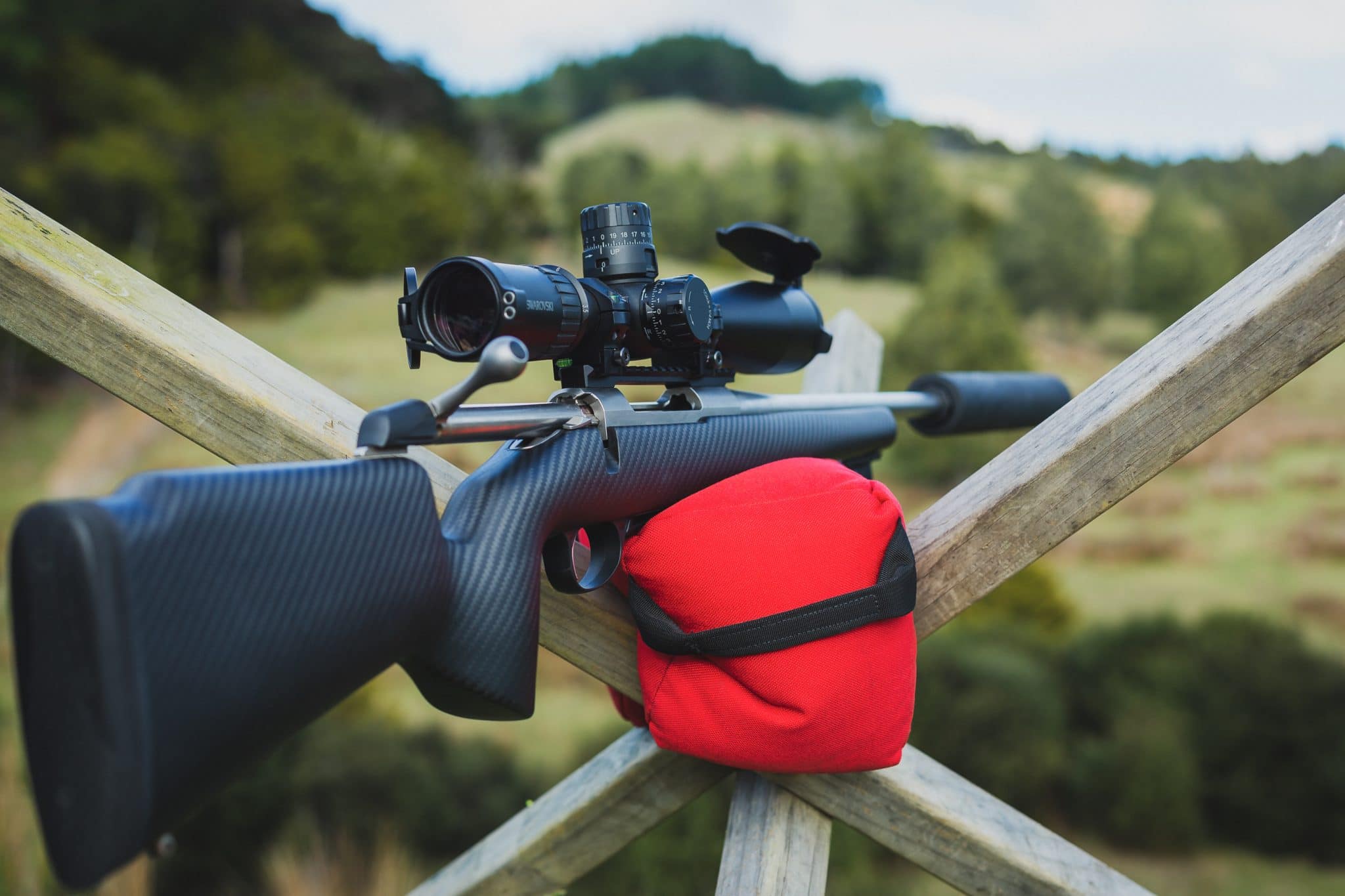What first got me seriously pondering this question was a setup session recently, with a couple of similar rifle that had the same issue. The heavier Hornady ammo the client was using, didn’t shoot as well as the lower weight Sako Ammo (Sierra projectiles).
Now, the easiest solution would be to just utilise the lighter weight projectile, nearly half the average group size, and be done. But my brain doesn’t work like that.
I wondered, firstly, why. The Hornady Precision Hunter is very good ammo and shoots consistently, and for that matter, so does the Sako GameHead Pro ammo. But with these two specific guns, on this day, the Sako came out better off.
The aim of this article is to address some of the reasons why, but also explore the ballistic differences the final choice would make for the shooter.
Hi there. Want to read the rest of the article?
Cool. This one is reserved for site supporters.
[membership level=”2″]
The Rifles
So, firstly, and I think this is a very important point – both rifles were from the Sako/Tikka factory – there was a Sako A7 and a Tikka T3X – both chambered in .300 WIN.
By comparison – a Remington 700 Long Range in .300 WIN comes standard in 1:10 – as does the Savage, and really, most American borne rifles. There is our first clue.
This is important to consider, because – both have the same twist rate of 1:11″ – this affects stability – which – becomes a consideration once you start looking at heavier projectiles – like the 200-grain ELD-X.
A quick check-up on recommended twist rates by weight would suggest that the 1:11 is going to be a little slow for such a heavy projectile. We will talk about potential stability issues (and what this means at both 100 and 1000 later).
The Tikka was a fairly standard T3X Lite in .300 with a Zeiss scope up on top of it. Hardy Can on the end. A fairly typical setup for an NZ hunter, and a nice choice!

The A7 was a bit of a special beast.
It had a Swarovski X5 on top of it and was sitting in a Ken Henderson Hi-Tec composites stock. This is currently my pick for aftermarket replacement options for Long Range hunting and target shooting. It had a DPT can on the front.
To put it simply – this made it (once I changed from the 200 grains to the Sako ammo) one of the mildest magnums I have ever shot.

I actually took a couple of extra shots through the gun because it was so nice to shoot. Seriously, I could happily shoot it all day long and not feel beaten up by it at all!
I have a build underway with Greg from Custom Guns – and picking I will be dropping it into one of Ken’s stocks when I get it back.

The results were interesting, and interesting because they were consistent over both rifles.
The owner of the A7 has supplied the gun with some reloads utilising the ELD-X 200 Grainers – and the T3X came with some Hornady Precision Hunter in the same grain weight and projectile.
Group Testing Results
In short, while yes, it’s a small sample size, in both cases, the 165 Grain Sako Gamehead (Sierra Gamechanger Pro) out-shot the ELD-X.
I don’t know where the photo is for the A7 shooting the ELD-X but the same result – in both cases the 200 ELD-X shot around 1 MOA (still not bad, btw), but the 165 GameChanger was 3/4 MOA.
Initial Thoughts
Now yes, I understand it’s a bit simplistic just narrowing down to the grain weight – and I understand it’s a combination of things – but regardless, what interested me in the bigger picture of why and what the lighter projectile might mean for the client’s guns.
Ok. So, lets follow the notion that it might be a stability issue.
Stability Testing and Probability of Hit
I am going to step aside from the specific firearms for a moment now, and instead, bring up some details for the factory loads – just to give us some consistency and a solid base for talking from.
If we take the two loads we were using – we get these details –
- Sako Gamehead Pro 165 – box velocity – 3215 fps – G1 BC .530
- Hornady Precision Hunter 200 ELD-X – 2850 fps – G1 .597
Not supprising – heavier gives us a better BC, but it is slower.
If I put those into the Berger Twist Rate Stability Calculator – and got the following results – The Sako Gamehead is just considered – with a Miller factor of 1.5 – The 200 ELD-X came up with 1.33 – marginally stable.
Now – I might update this when I get a proper length for the Gamechanger – but – in short – regardless, the 200-grain ELD-X does just seem a little heavy for the 1:11 twist to stabilise. Maybe this is the reason for the larger group at 100, maybe not. Also worth noting – Hornady, on the website recommends a minimum of a 1:10 twist for the rifle.
Of course, predicting what this means at distance is a bit of a challenge.
Many Ballistics apps don’t allow for stability as a factor in their ballistic solutions.
However, Applied Ballistics, the desktop version, gives us a couple of things we can use to compare the two. The main factor getting condensed down to something simple – the probability of a hit. The problem is, the modelling doesn’t show a difference. However, it’s also important to understand that stability, on the whole, is also a static variable – if it is unstable at the muzzle, it is unstable downrange, and the observable and measurable difference is group size.
Using Group size as a variable
So, what we can model is Group size.
The stability at 100 meters, is only one factor that is affecting the group size. It might be. Or it might be the OBT of the rifle (Optimal Barrel Time, another rabbit hole to go down into) or it could be how far those loads are jumping in the Tikka/Sako barrels, or a pile of other things – so it is fair to say I am playing a bit of the correlation/causation game here. But – it is something thing we can model in the software.
If we take all the other factors as the same – basing our model on a 4″ target (which I feel is an honest size for an ethical kill shot) at 700 meters (which is near the ethical limit for most ‘long-range’ hunting) and simply change the group size from 3/4 MOA to 1 MOA – we get these results:

If I now simply drop the system accuracy to .75 MOA…

Now. Anyone who has done any amount of long distance shooting will understand most of us dont actually shoot this well to distance. Just because a firearm shoots at 1 MOA at 100, that doesn’t mean (even though the system is angular) that the SYSTEM which includes ourselves, shooting position and now atmostpheric variables – will be linear. But, isolating it down like this at least gives us an indicator.
So – in short – if we can reduce our system size from 1 MOA to .75 MOA, we increase our percentage of hit by 11.8%
I would also argue here, that given there are no other variables being accounted for – that is right on the margin of an ethical shot regardless.
Stability and Terminal Performance
Another important consideration (for some of us) is how stability affects Terminal Performance – that meaning, what happens when we hit a target with the intent to kill it.
A stable bullet performs better after impact. Stability keeps the bullet point orientated, even after impact – this can result in better penetration, and for expanding bullets, more constant expansion and mushrooming. This results in better energy transfer – better killing ability.
Only part of it…
So ends part one of my exploration into the ballistic differences. Part two – drop!
[/membership]





